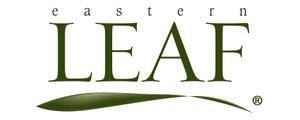
Repotting your bonsai tree can be a stressful
time. Most people worry about killing their tree so they avoid repotting
for as long as possible. However, the opposite is true. By not keeping
up on regular repotting, the health of your tree may start to decline.
Repotting will actually promote more growth and improve the health of
the tree. Below are some of the most important aspects of repotting that most people overlook.
Temperature:
The ideal time for most repotting is early spring prior to the temperature getting too hot. If the weather is too warm, the roots have a risk of drying out before they establish themselves. This is also a good reason to place your tree in a filtered light location immediately after repotting.
Air Pockets:
Make sure you check for air pockets thoroughly. If you miss a crucial one underneath the tree, the roots may dry out completely.
Insufficient Root Trimming:
Root trimming is essential to promote growth. If you don't trim the roots, the new roots won't be able to establish themselves in the soil as easily.
Improper Soil:
If you're repotting your tree, use a good soil mix. Not only will you not have to repot as often but your roots will thank you for it.
Fertilizer:
A major pitfall that many enthusiasts make is to load up on fertilizer after repotting. Most often this leads to burning but will sometimes kill your tree. Give your tree time to establish itself. You can always add fertilizer later.
Temperature:
The ideal time for most repotting is early spring prior to the temperature getting too hot. If the weather is too warm, the roots have a risk of drying out before they establish themselves. This is also a good reason to place your tree in a filtered light location immediately after repotting.
Air Pockets:
Make sure you check for air pockets thoroughly. If you miss a crucial one underneath the tree, the roots may dry out completely.
Insufficient Root Trimming:
Root trimming is essential to promote growth. If you don't trim the roots, the new roots won't be able to establish themselves in the soil as easily.
Improper Soil:
If you're repotting your tree, use a good soil mix. Not only will you not have to repot as often but your roots will thank you for it.
Fertilizer:
A major pitfall that many enthusiasts make is to load up on fertilizer after repotting. Most often this leads to burning but will sometimes kill your tree. Give your tree time to establish itself. You can always add fertilizer later.
